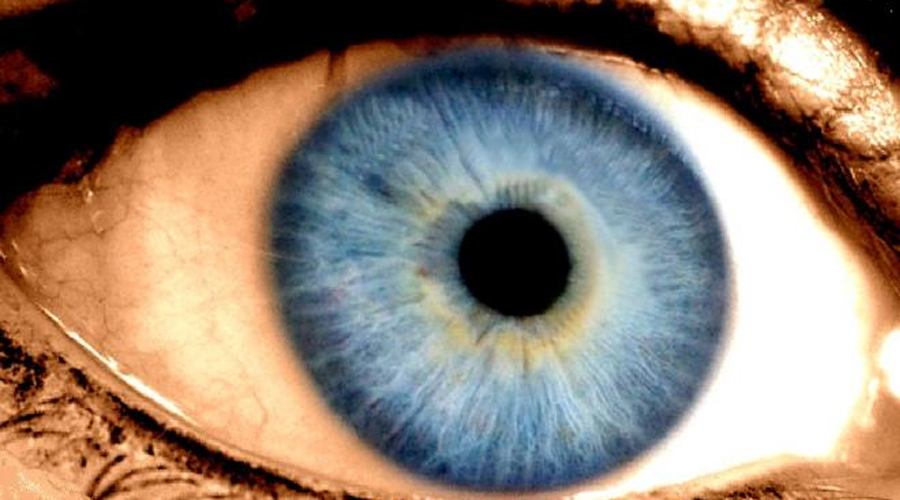Your eyes are the windows to your soul, and also often to your health. But they’re also powerful organs that are capable of doing some remarkable things you might not be aware of — such as blinking within milliseconds, and healing themselves with amazing agility and prowess.
Infrared Sight
The human eye can detect the visible spectrum of the electromagnetic spectrum — a range of wavelengths between 390 to 700 nanometers. This is why scientists have always assumed that infrared light, a type of electromagnetic radiation with longer wavelengths than visible light, has been “invisible” to the human eye.
But recently, researchers from Washington University in St. Louis discovered that contrary to prior beliefs, the human eye is in fact capable of seeing infrared light — but only under certain conditions. In the study, researchers shot quick pulses of laser light into their eyes, which triggered a “double hit,” allowing them to see flashes of green light, which was infrared. Because infrared light has less energy than the colors we see in the visible spectrum, it can’t activate photoreceptors in the eye. But the scientists found that if two photons of infrared light hit the same receptor one after another, it adds up to one photon of visible light, which was the green flash the researchers saw.
“[I]f a pigment molecule in the retina is hit in rapid succession by a pair of photons that are 1,000 nanometers long, those light particles will deliver the same amount of energy as a single hit from a 500-nanometer photon, which is well within the visible spectrum,” said Vladimir Kefalov, senior author of the study and an associate professor at Washington University’s School of Medicine, in the press release. “That’s how we are able to see it.”
More research will be needed to further understand how it’s possible for the eye to experience infrared light. “We are now trying to develop a new tool that would allow physicians to not only examine the eye but also to stimulate specific parts of the retina to determine whether it is functioning properly,” Kefalov said. “We hope that ultimately this discovery will have some very practical applications.”
Healing Power
Eyes have remarkable healing power, and the ability to fully repair themselves within 48 hours after a corneal scratch, which involves an abrasion on the eye’s cornea, or the protective layering over the iris and the pupil. Unless it’s a deep abrasion, which can cause corneal infections, erosion, or scarring, the eye can typically heal itself pretty quickly without much external help.
The Most Active Muscles
Though the heart is known as the strongest muscle in the body, your eyes are also extremely active when it comes to muscle movement. The external muscles of the eye are constantly in motion when you’re looking around or focusing on objects or distance, and always repositioning when the head is moving. Within just one hour of reading a book, the eyes make up to 10,000 coordinating movements. The ability to repeat motions is also very strong in the eye. You can actually do eye stretches to make your eye movements more fluid and reduce tension in your eye muscles.
Our Lens Is Quicker Than Cameras
Similar to a camera lens that adjusts based on the different distances you’re focusing on, your eyes have a lens behind the pupil that adjusts focus depending on where you’re looking. This happens in a split second, whereas a camera lens tends to take a bit longer to focus. This allows you to look anywhere quickly without feeling sick from delayed, blurred focus. The eye also has a wide dynamic range, adjusting to brightness in our view by opening and closing the pupils, so we can see the full, sun-filled sky.
In The Blink Of An Eye
You blink up to 15,000 times every day, which is about 10 percent of our waking hours. Our eyelids are pretty quick, blinking within one-third of a second. Though it may seem like a useless involuntary motion, the act of blinking is like the windshield wipers of a car, clearing the surface of your eye from any tiny particles of dust or debris that have entered. It’s a very fast and efficient way of cleaning, too.
But blinking might mean more than just lubricating our eyes with tears to clear them off every so often. According to a study published in the Proceedings of the National Academy of Sciences, we don’t blink at random times. In fact, our blinking appears to occur at predictable moments, such as at the end of a sentence we’re reading, or during a pause in someone’s speech. This led researchers to hypothesize that blinking, in addition to being a physical break or cleanse, is something of a mental cleanse too, allowing us to clear our minds and take in the world better with increased focus after each break.
Curing Blind Spots In Vision
Even if you have an eye disorder like glaucoma, your eyes work hard to make up for any blind spots in your vision. If you have one eye that has a vision problem, the other eye works harder to make up for it and fill in the vision gaps. This also occurs if one eye is near-sighted or far-sighted. With both eyes open, your vision is always stronger. In short, each eye has the other’s back, and this is what makes your eyes resilient and efficient.
Comments are closed.

